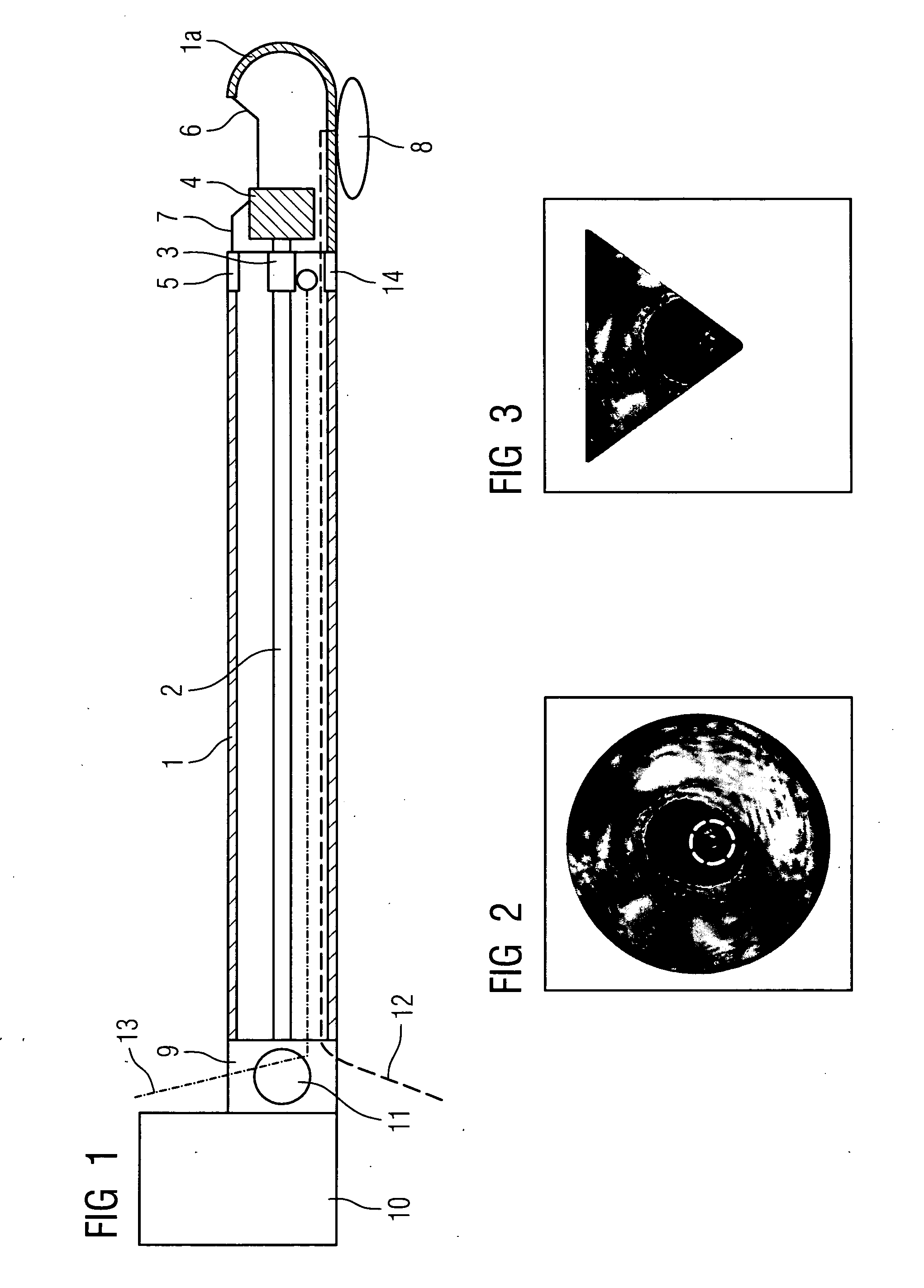Device for applying and monitoring medical atherectomy
a technology for atherectomy and catheters, applied in the field of devices for carrying out and monitoring atherectomy, can solve the problems of significant risk for patients, inability of medical personnel to distinguish between plaque and artery wall, perforation of artery, etc., and achieve the effect of reducing the number of method steps and the number of catheters used, eliminating plaque, and high detail resolution of structures
- Summary
- Abstract
- Description
- Claims
- Application Information
AI Technical Summary
Benefits of technology
Problems solved by technology
Method used
Image
Examples
Embodiment Construction
[0022]FIG. 1 shows a schematic diagram of a combined atherectomy-OCT catheter with an external flexible catheter casing 1 with a rigid catheter tip 1a. A hollow flexible drive shaft 2 with a glass-fiber line (not shown) running through it as the OCT line is arranged within the catheter casing. The hollow flexible drive shaft 2 serves both to drive a rotatable mirror forming the OCT sensor 3, which in the exemplary embodiment shown—viewed from the external end of the catheter out—is in front of the knife 4. The OCT sensor 3 lies within a revolving ring-shaped window 5, while the rotating knife 4 also driven by the drive shaft 2 passing through it projects into the window opening 6 of the rigid catheter tip 1a. The knife with its blade is therefore somewhat set back compared with the external contour 7 of the catheter tip 1a.
[0023] An inflatable balloon 8 on the side of the catheter tip 1a opposite the window opening 6 can press said catheter tip onto the inner wall of the artery, so...
PUM
 Login to View More
Login to View More Abstract
Description
Claims
Application Information
 Login to View More
Login to View More - R&D
- Intellectual Property
- Life Sciences
- Materials
- Tech Scout
- Unparalleled Data Quality
- Higher Quality Content
- 60% Fewer Hallucinations
Browse by: Latest US Patents, China's latest patents, Technical Efficacy Thesaurus, Application Domain, Technology Topic, Popular Technical Reports.
© 2025 PatSnap. All rights reserved.Legal|Privacy policy|Modern Slavery Act Transparency Statement|Sitemap|About US| Contact US: help@patsnap.com


